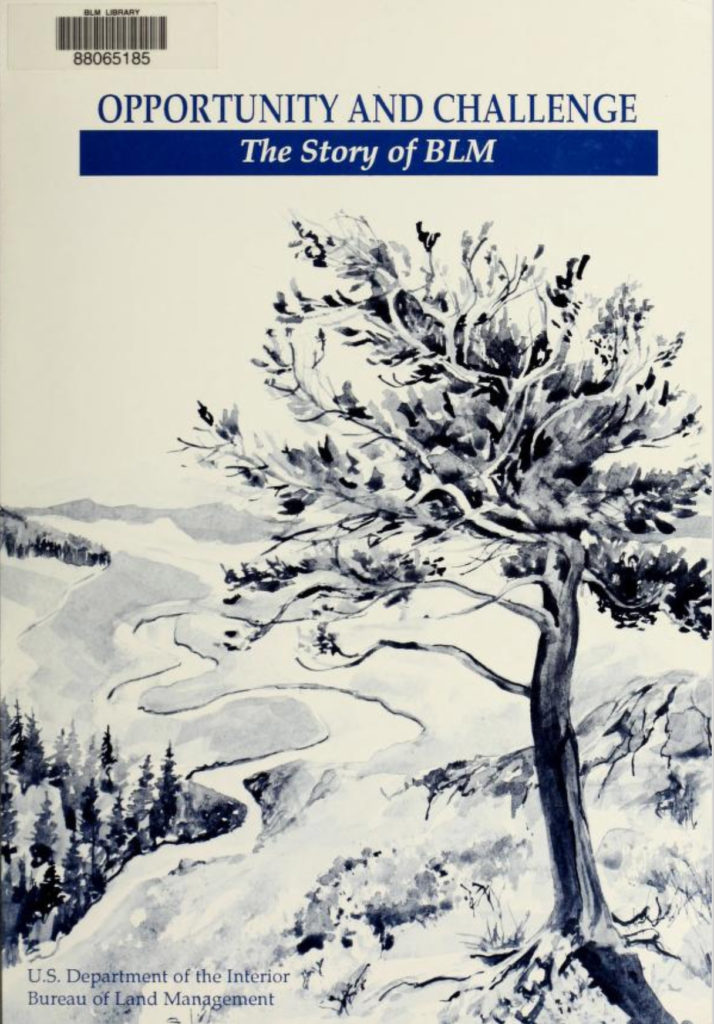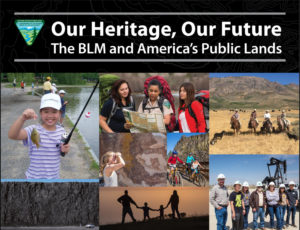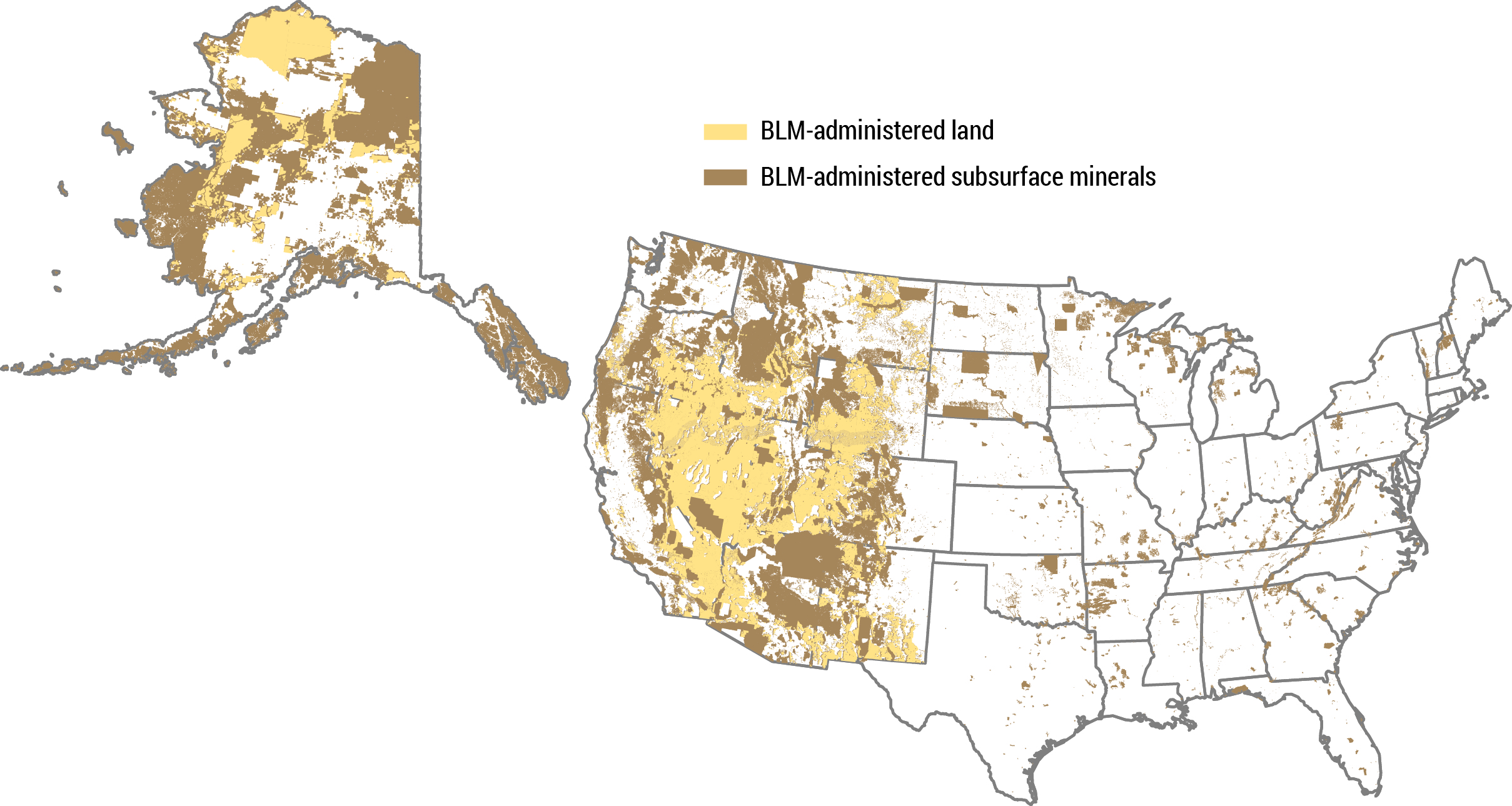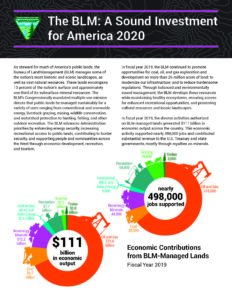Bureau of Land Management
The BLM is an agency within the U.S. Department of the Interior with an annual budget of about $1.1 billion and 9,600 employees. President Harry S. Truman created the BLM in 1946 by combining two existing agencies: the General Land Office and the Grazing Service. The mission of the BLM is “to sustain the health, diversity, and productivity of the public lands for the use and enjoyment of present and future generations.” The BLM’s holdings were described originally as “the land nobody wanted” because homesteaders had passed them by. Today, the BLM manages public lands under the provisions of its organic act, the Federal Land Policy and Management Act of 1976 and other related laws. For more information about the history of the BLM, see the BLM’s history website page, Opportunity and Challenge: The Story of BLM, and Our Heritage, Our Future: the BLM and America’s Public Lands.
The BLM administers more land than any other Federal agency, managing and conserving resources for multiple use and sustained yield on 245 million surface acres of public land; those uses include energy and mineral development of conventional and renewable resources; timber production; domestic livestock grazing; outdoor recreation; rights-of-way; fish and wildlife conservation; and conservation of natural, historical, cultural, and other resources on public lands. The bureau is responsible for onshore subsurface mineral estate development on 700 million acres. It manages the National Conservation Lands, including 28 national monuments, 23 national conservation areas and similarly designated areas, and 260 wilderness areas. In 2019, with approximately 10,000 employees and nearly 27,000 volunteers, BLM worked to conserve and protect the natural and cultural resources on the public lands and provide recreational and interpretive opportunities and programs. The federal government funds most of the cost of managing public use and protecting the resources on these federal lands. The BLM’s FY 2021 budget request is $1.2 billion. In 2019, over 27,000 volunteers supported the BLM by working to conserve and protect the natural and cultural resources on public lands and provide recreational and interpretative opportunities and programs.
BLM-Managed Lands
The BLM manages one in every 10 acres of land in the United States, and approximately 30 percent of the Nation’s minerals. These lands and minerals are found in every state in the country and encompass forests, mountains, rangelands, arctic tundra, and deserts. Most are located in twelve western States, including Alaska and comprise 245 million acres of land and 700 million acres of mineral estate. They are officially designated as the “National System of Public Lands (NSPL).
In addition to the public lands managed by the BLM, there are other public lands managed by U.S. Department of the Interior and U.S. Department of Agriculture agencies.
Federal Land Policy and Management Act
Public Law 94-579 | 43 U.S.C. Chapter 35
The Federal Land Policy and Management Act (FLPMA) of 1976 is often called the BLM’s organic act, since it authorizes the BLM to do a lot of the things it does on a daily basis. Through FLPMA, Congress formally recognized what BLM had been doing for many years: managing public lands under the principles of multiple use and sustained yield. FLPMA did much more, though—it granted BLM new authorities and responsibilities, amended or repealed previous legislation, and prescribed specific management techniques. Here are six of the most important parts of FLPMA.
FLPMA:
- Mandates the permanent federal ownership of public lands.
- Declares that BLM will manage public lands for multiple uses and values.
- Repealed more than 1,000 out-of-date land management statutes, replacing them with new policies, including a new planning system.
- Changed how BLM manages minerals and grazing in public lands.
- Mandated new forms of preservation and protection for public lands.
- Helped to usher in a cultural change in the BLM.
Economic Contribution of Public Lands
The value of the public lands is indisputable as a legacy for future generations and as a contributor to present-day economics and quality of life. In fiscal year 2019, the diverse activities authorized on BLM-managed lands generated $111 billion in economic output across the country. This economic activity supported nearly 498,000 jobs and contributed substantial revenue to the U.S. Treasury and state governments, mostly through royalties on minerals. Refer to The BLM: A Sound Investment for America 2020 for more details.
DOI Economic Report
Every year since 2009 the U.S. Department of the Interior has released an annual Economic Contribution Report highlighting the current economic impact of Interior’s existing programs and activities, and underscores the impact Interior has on a state-by-state basis. The latest report is for FY 2019.






